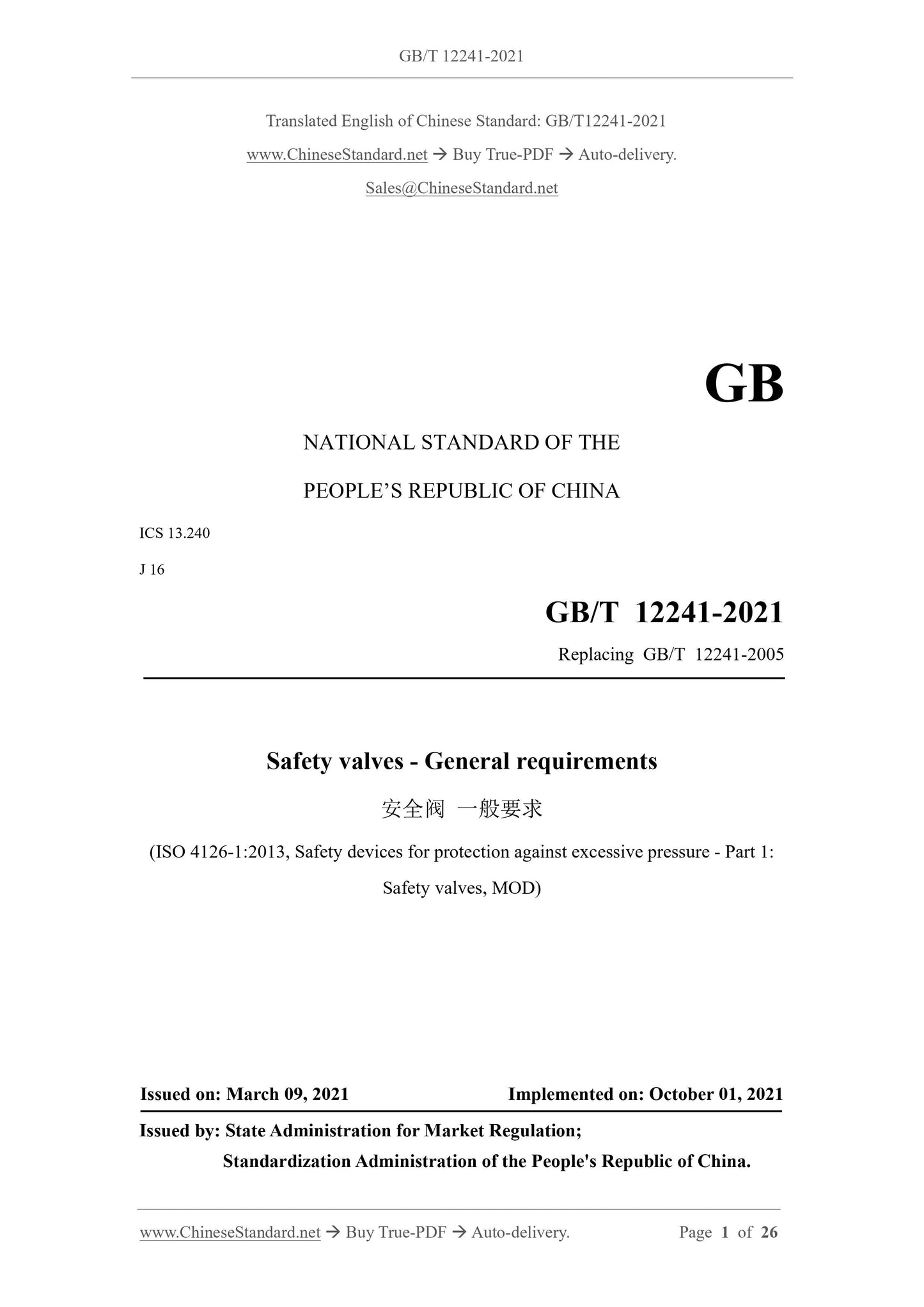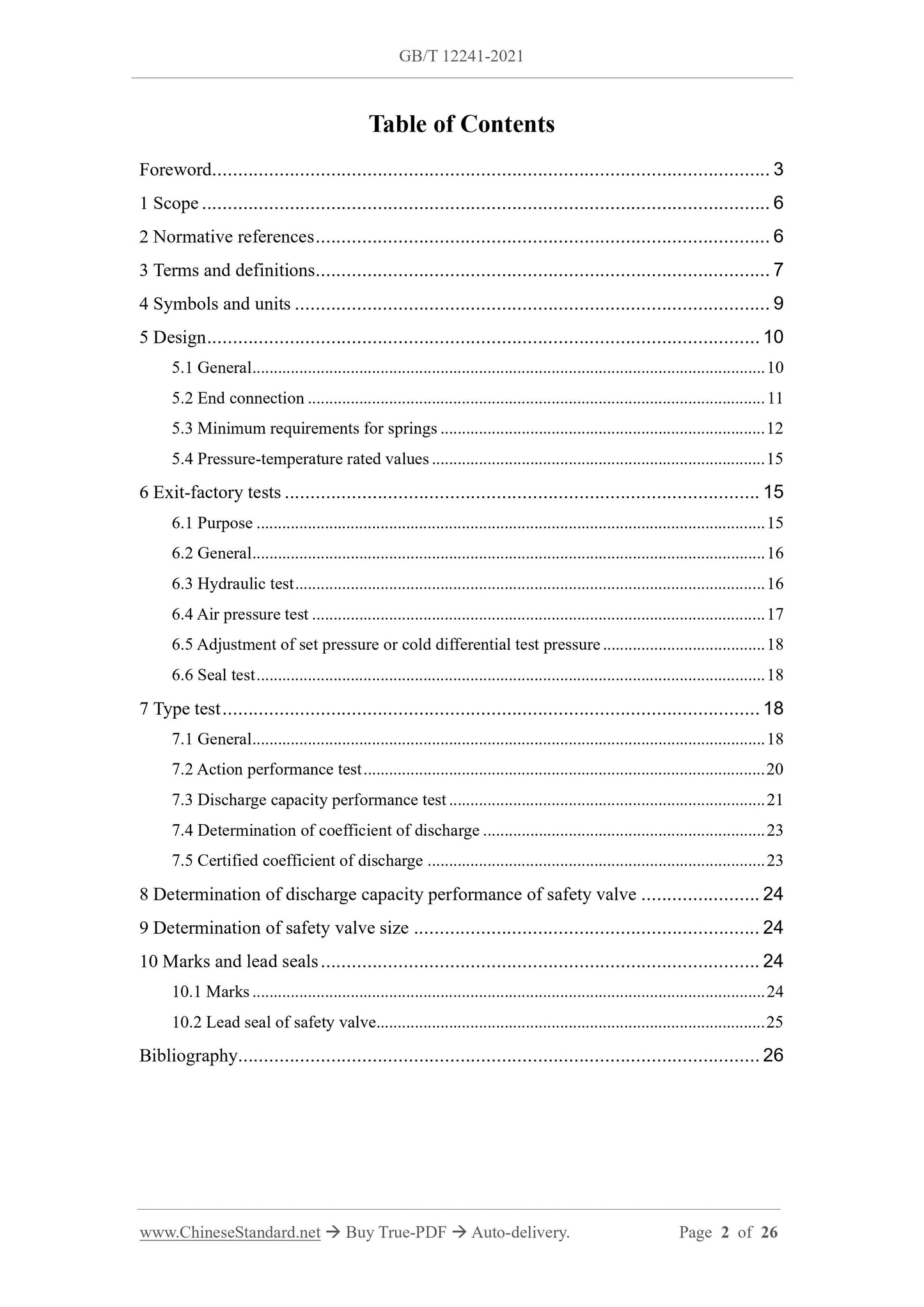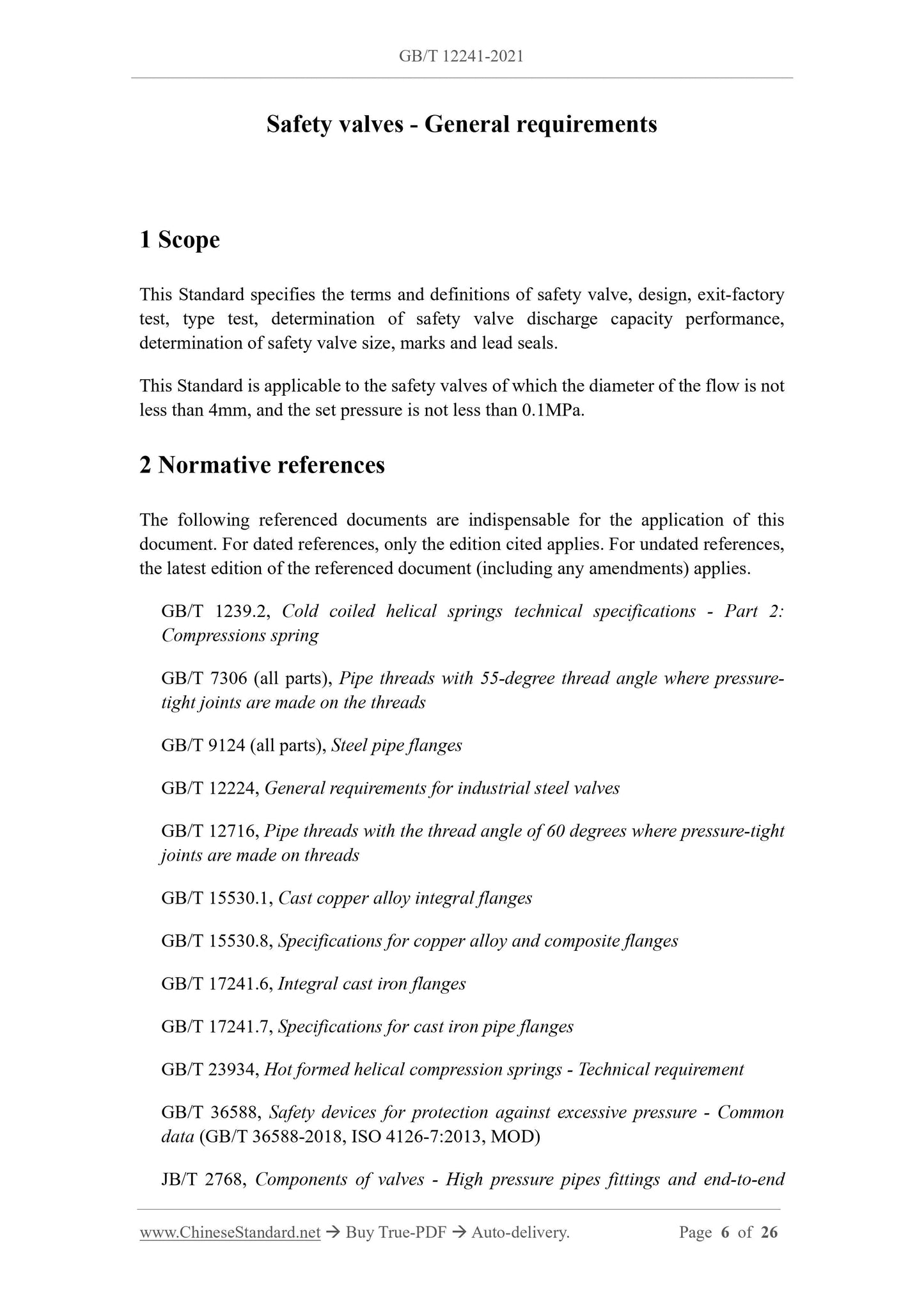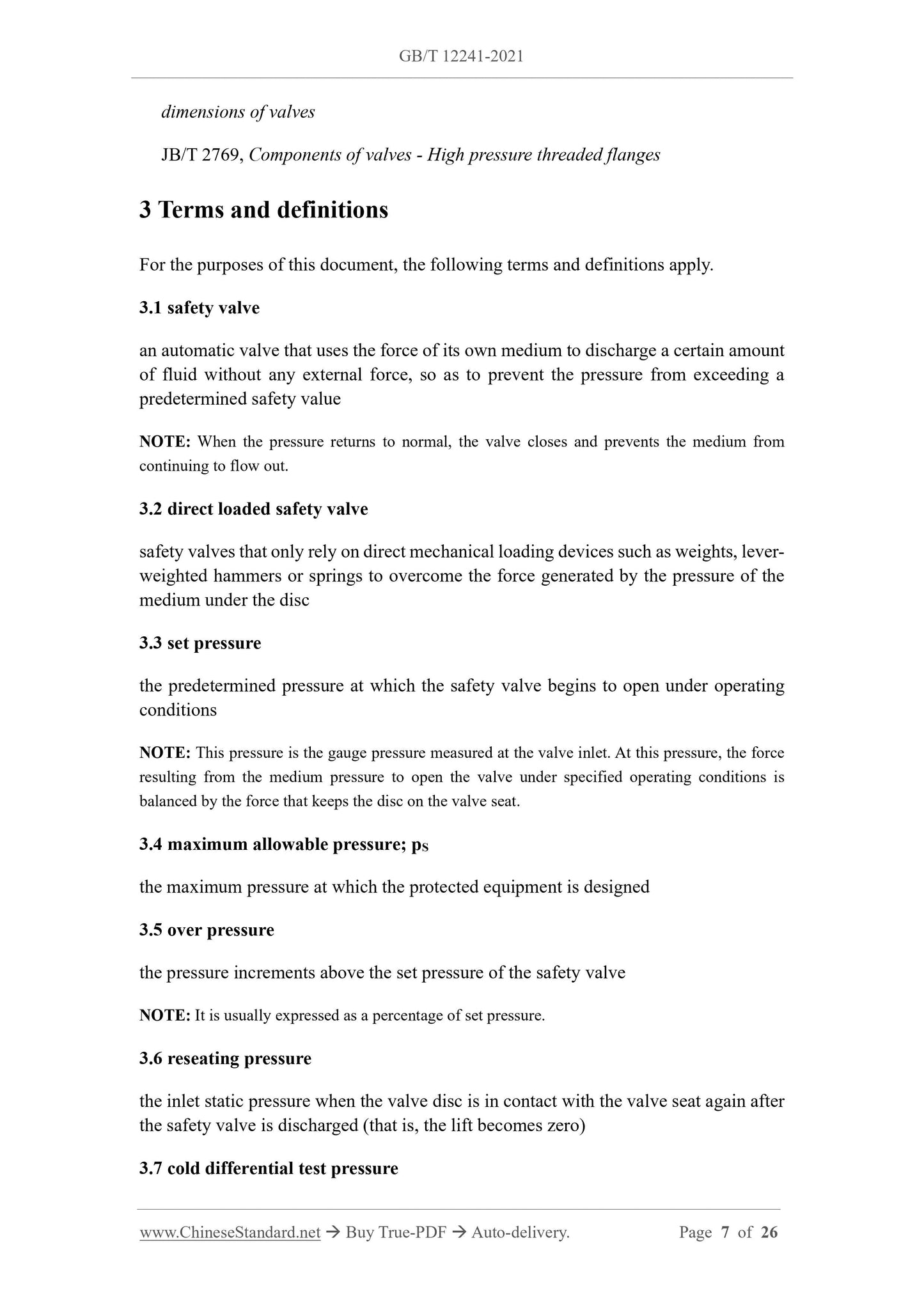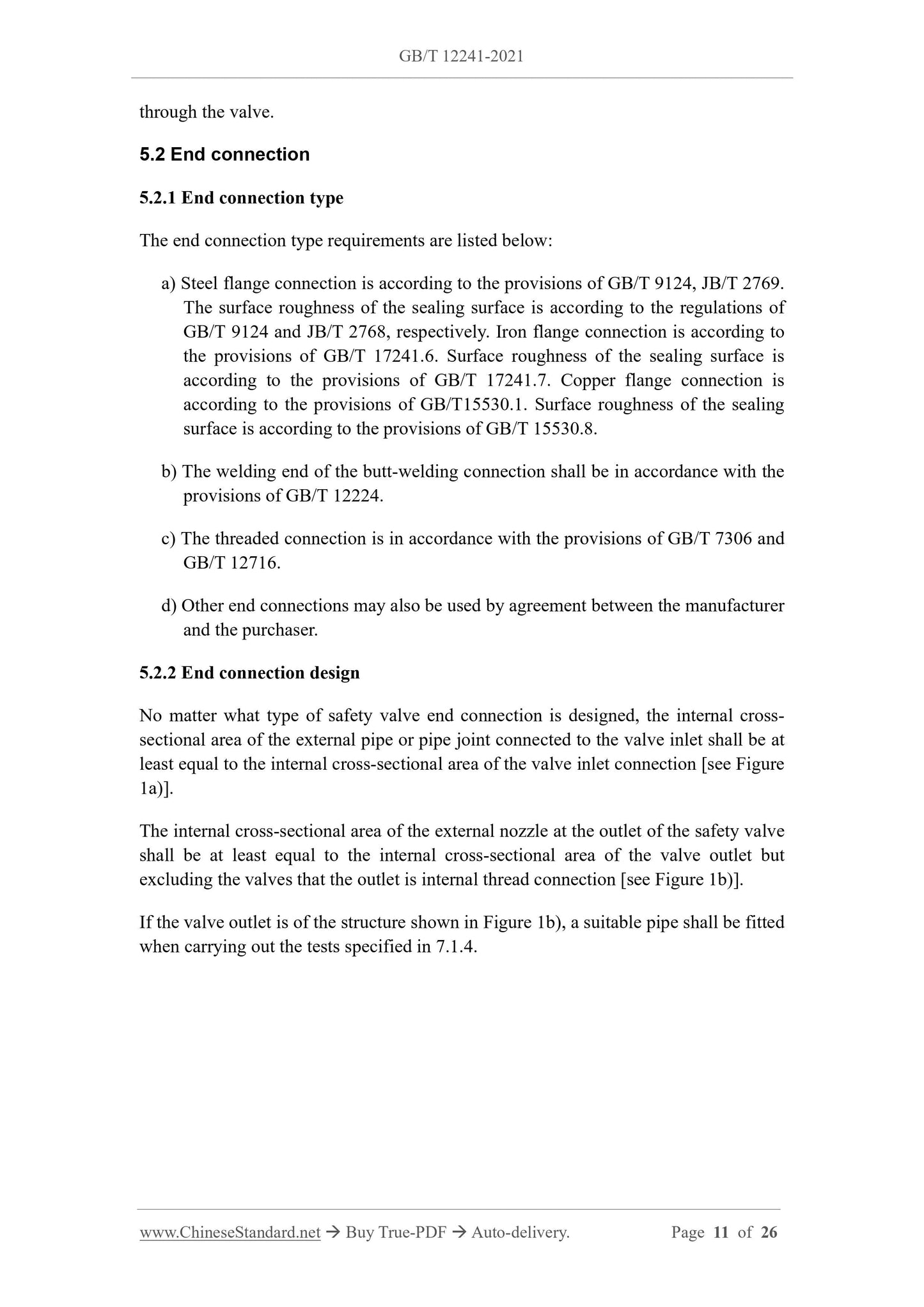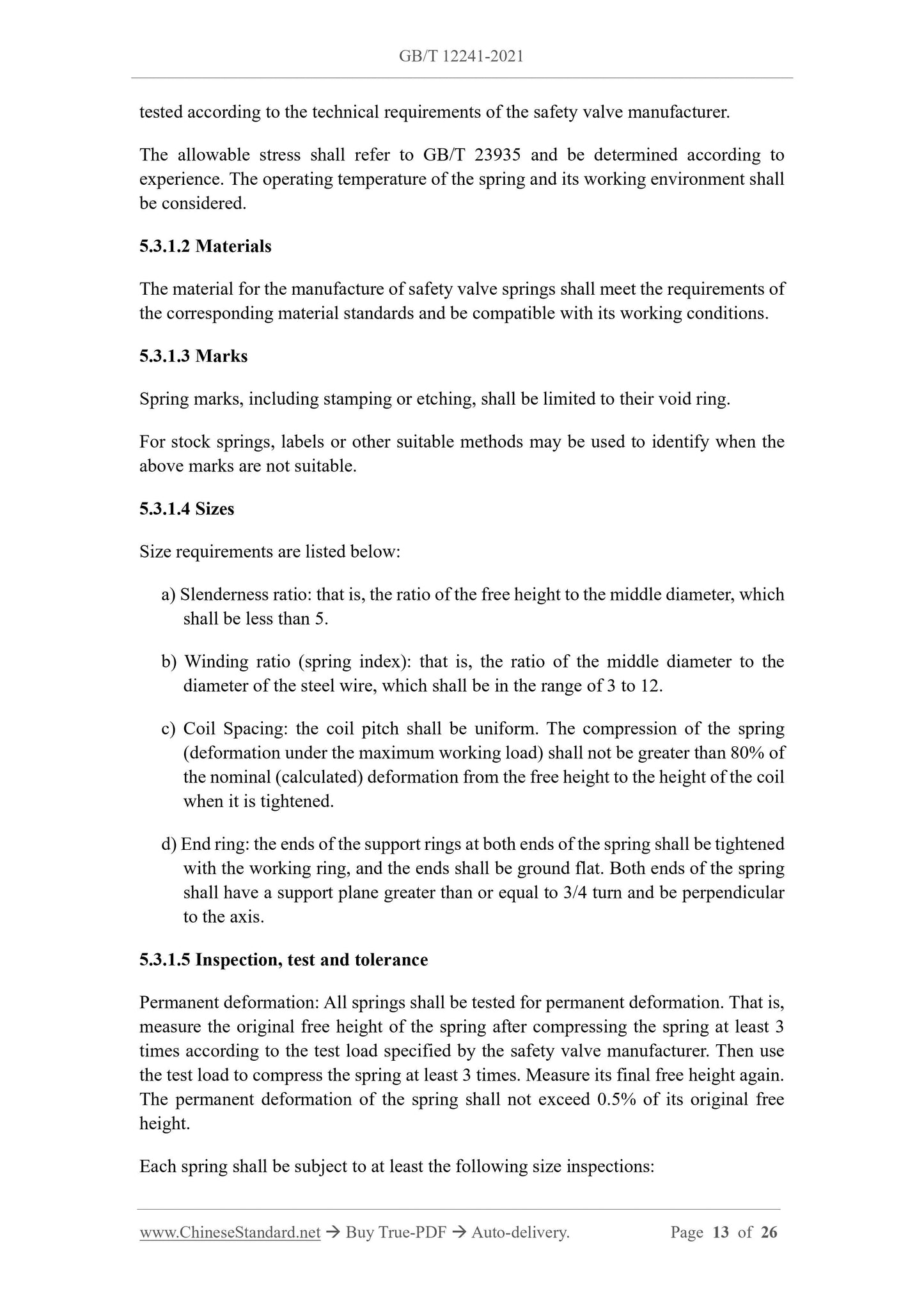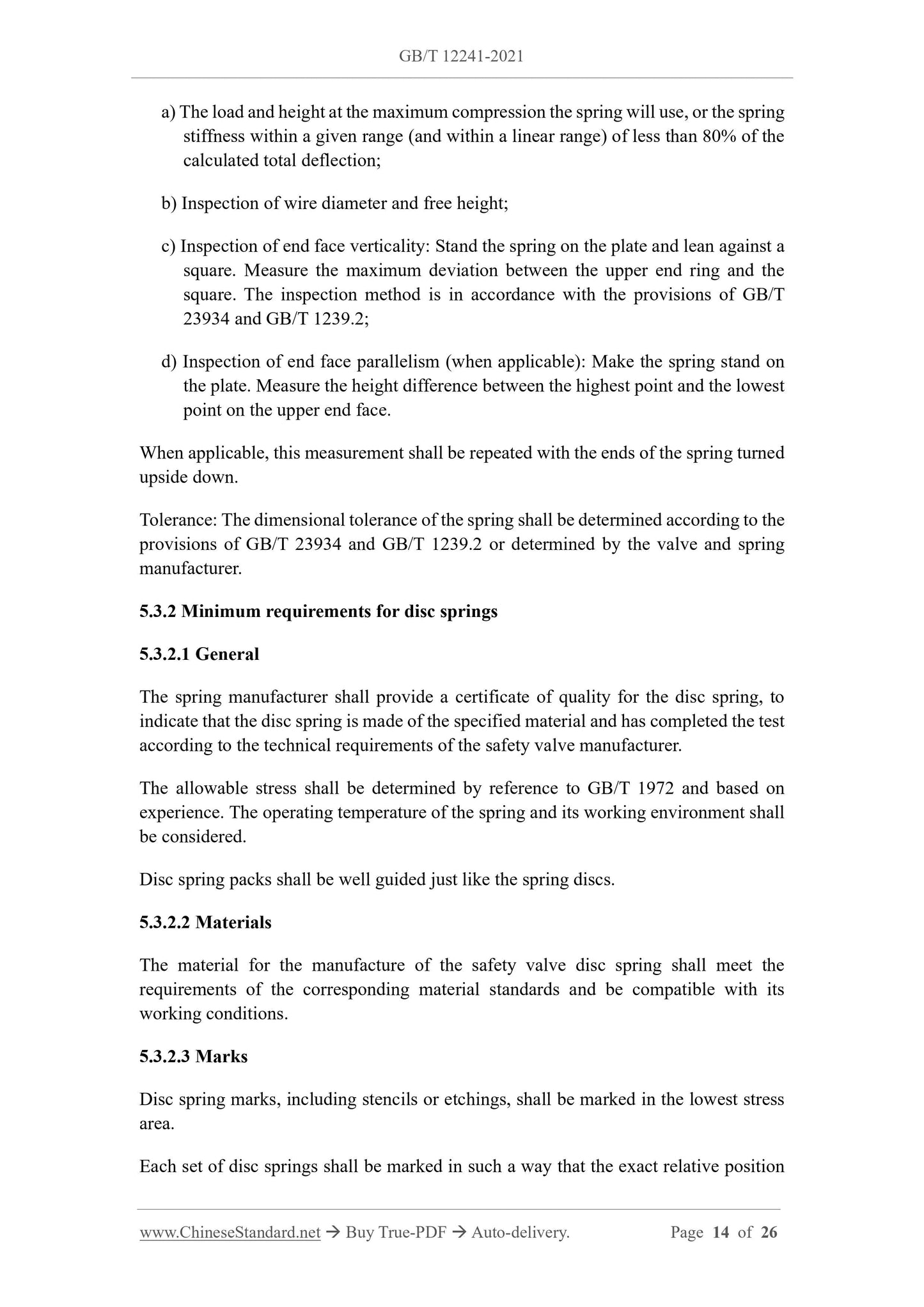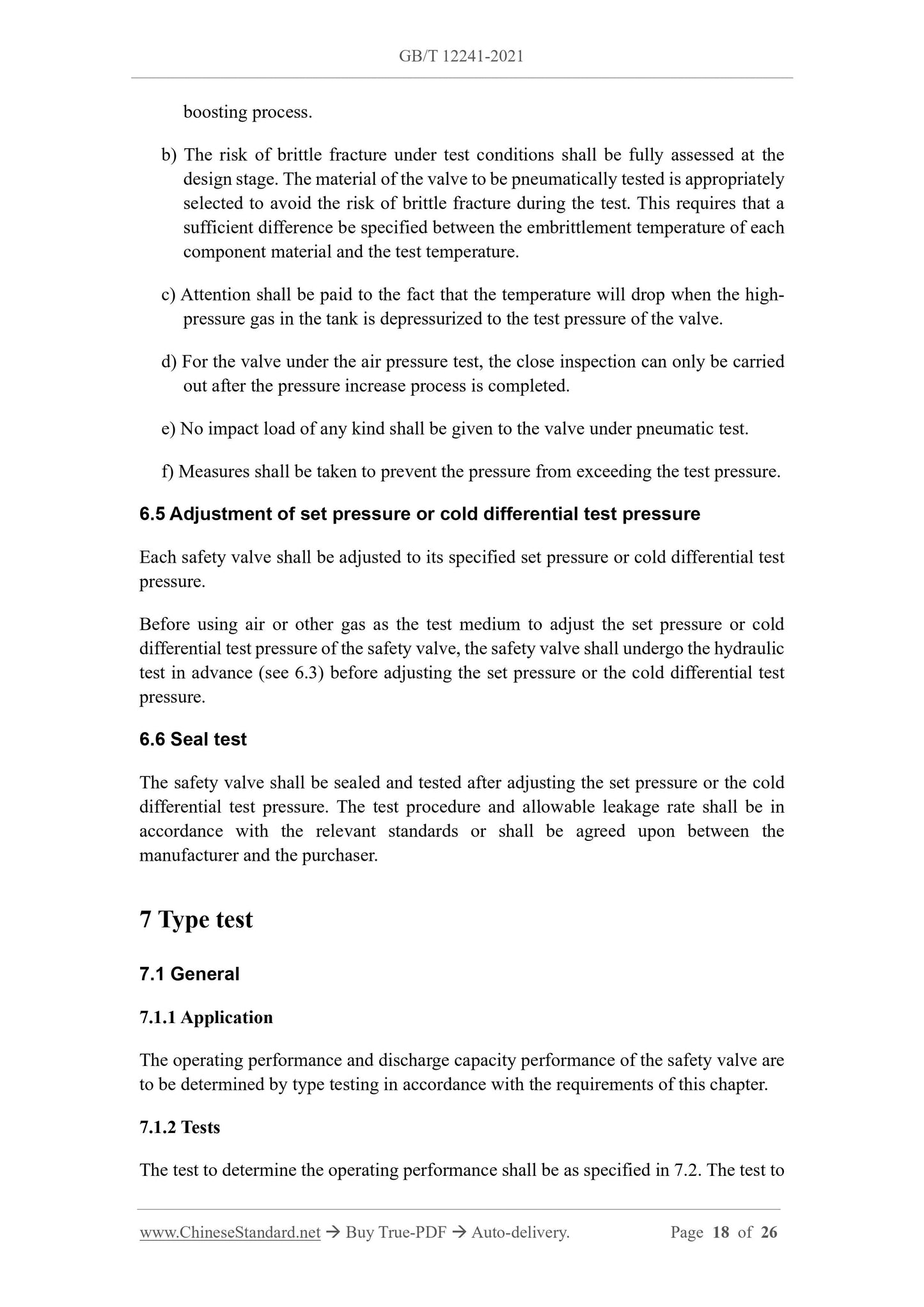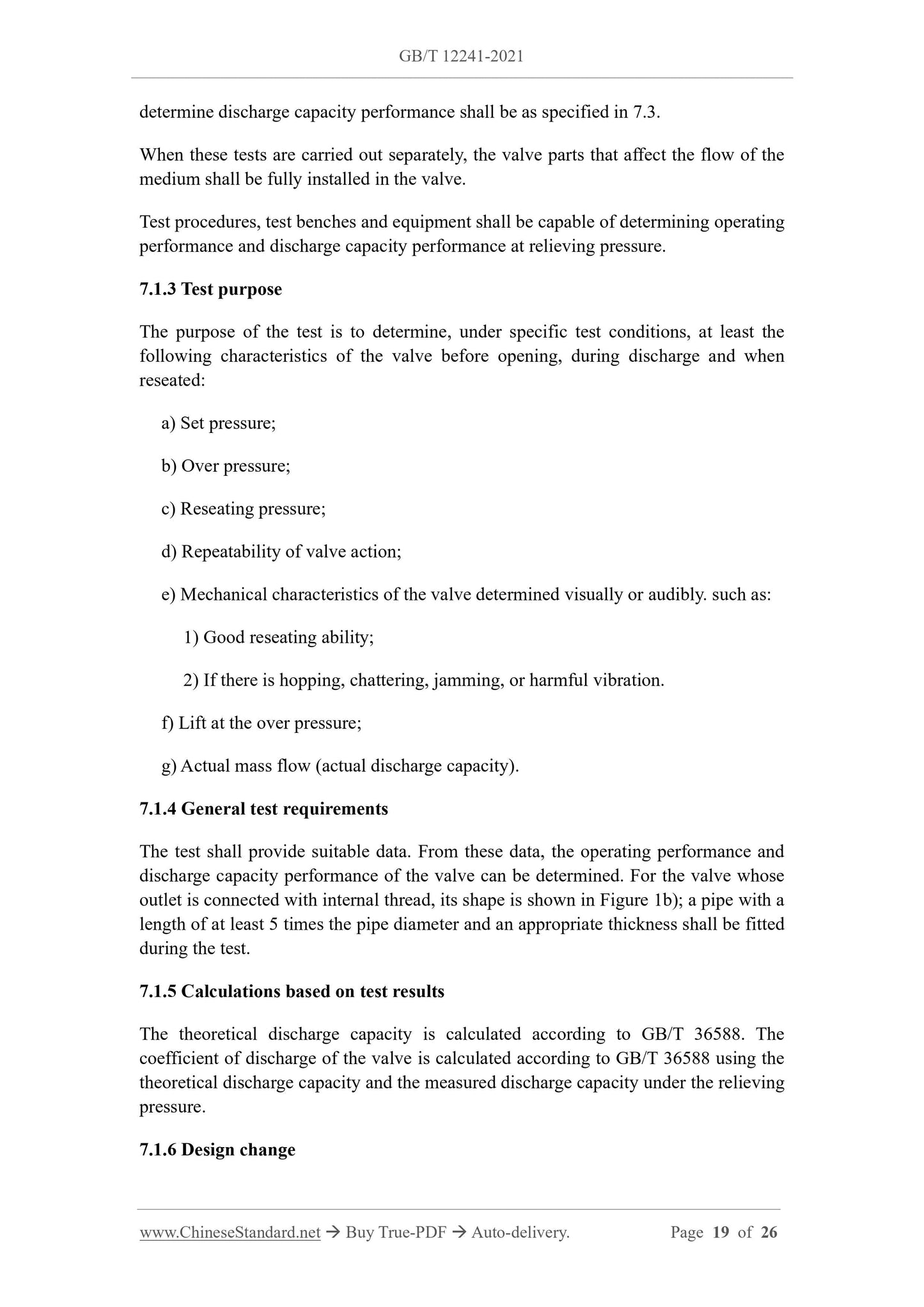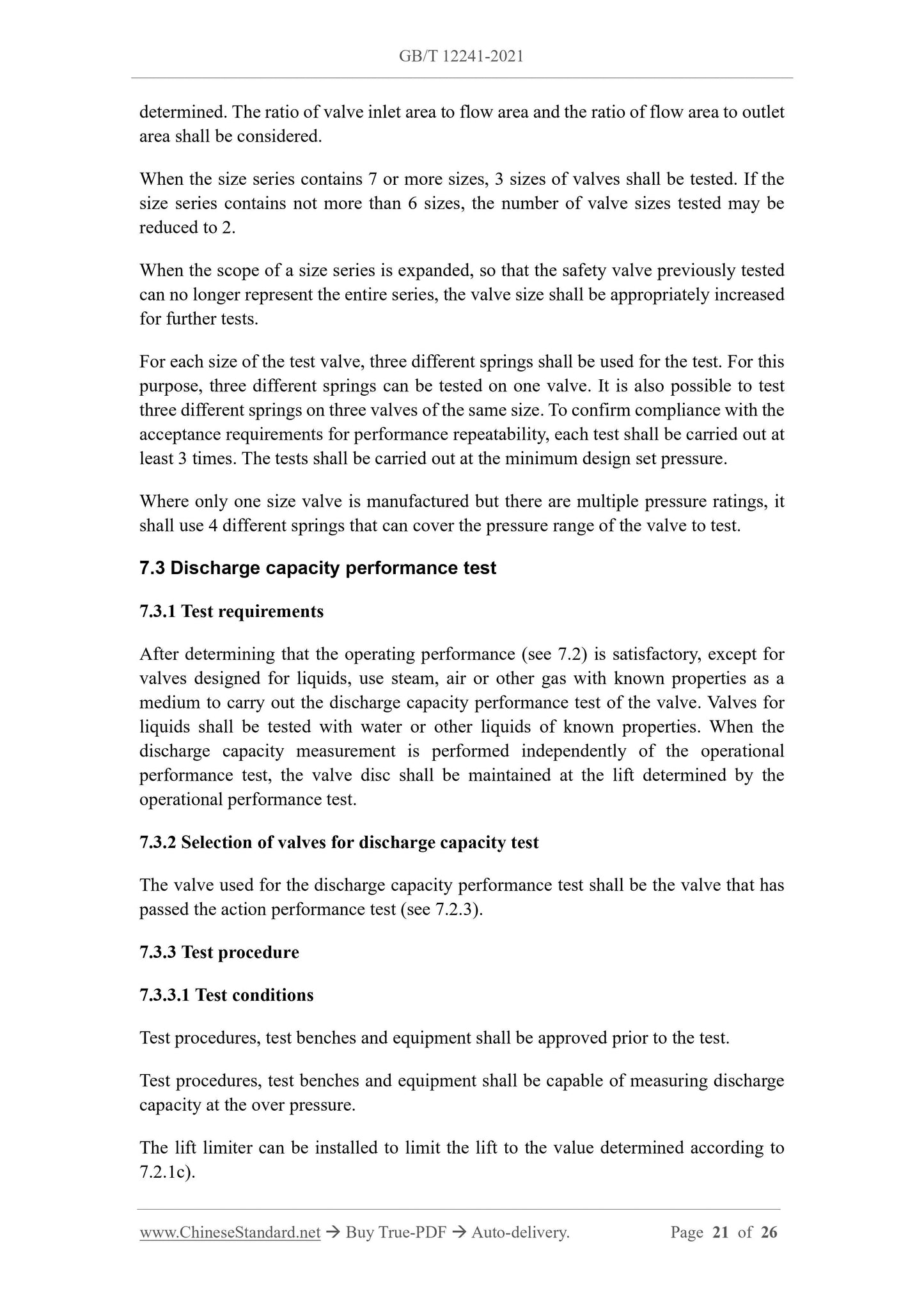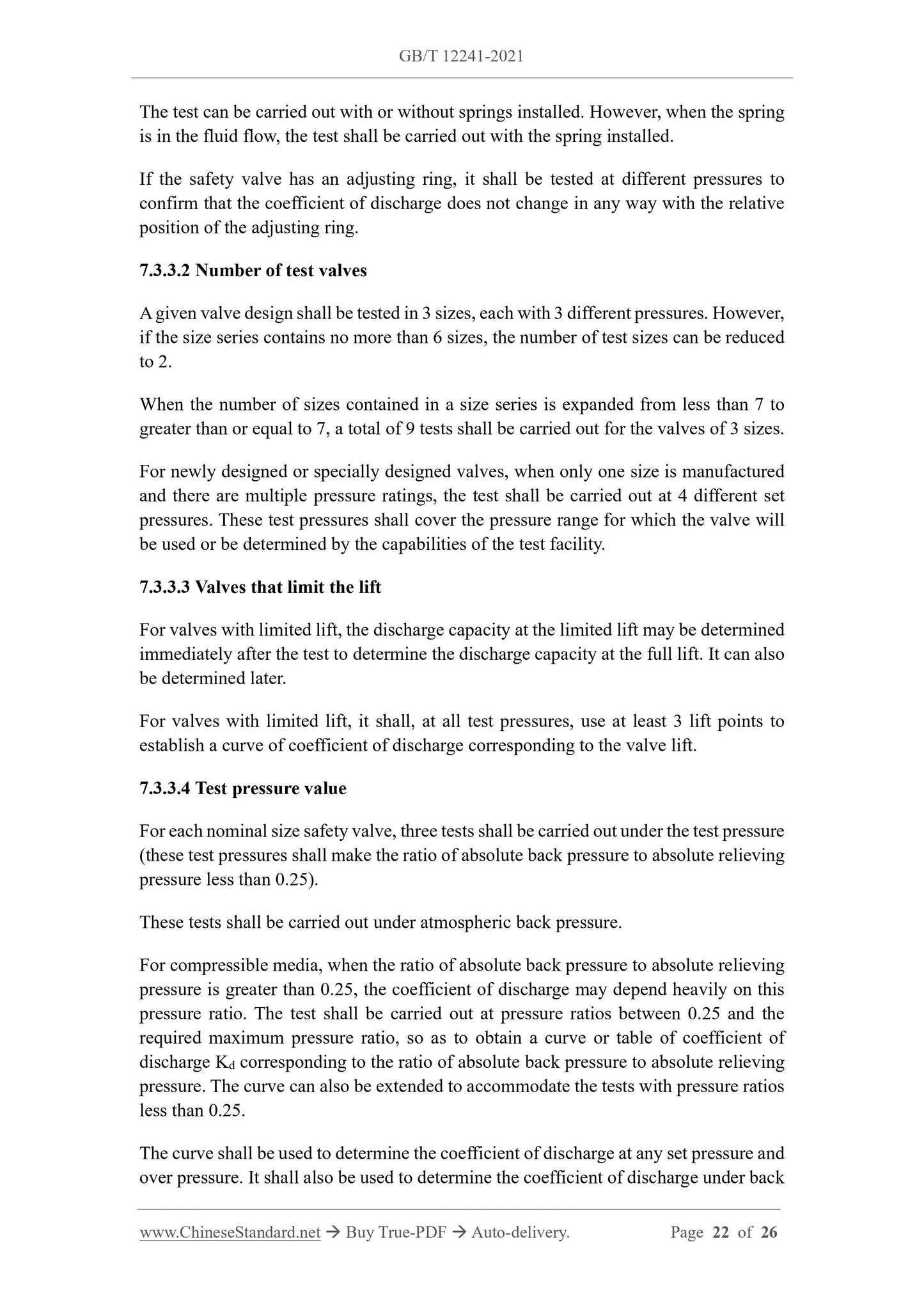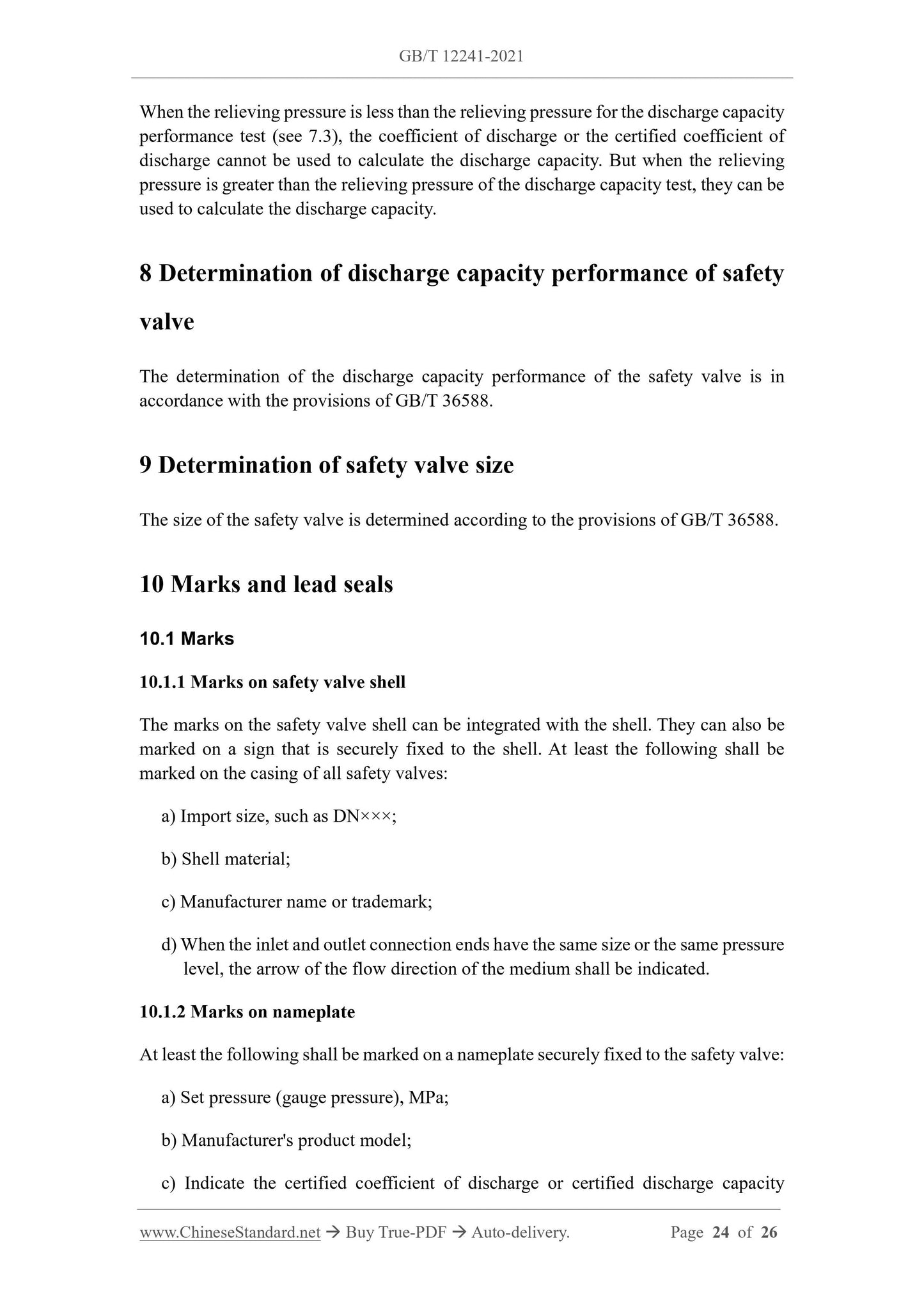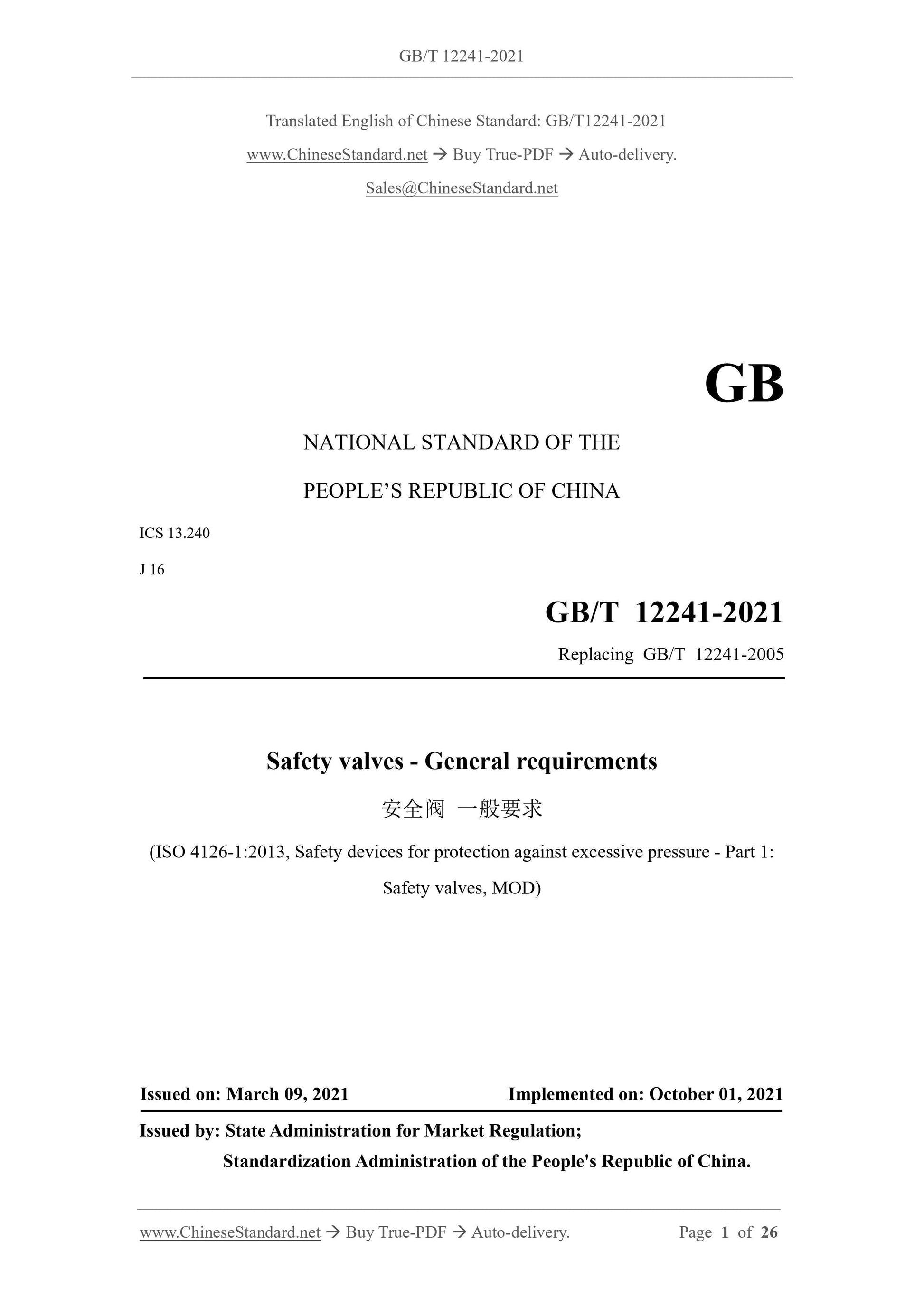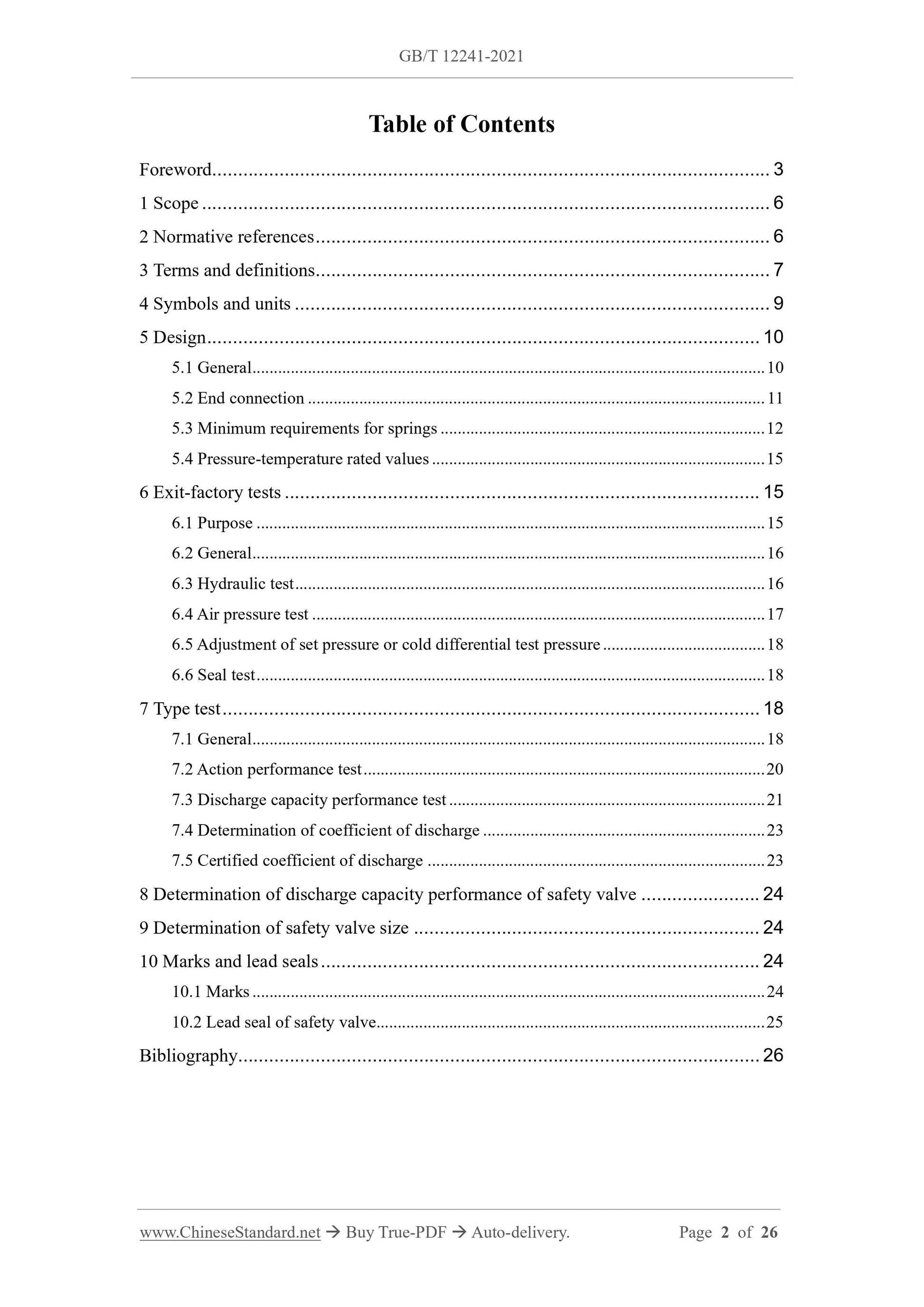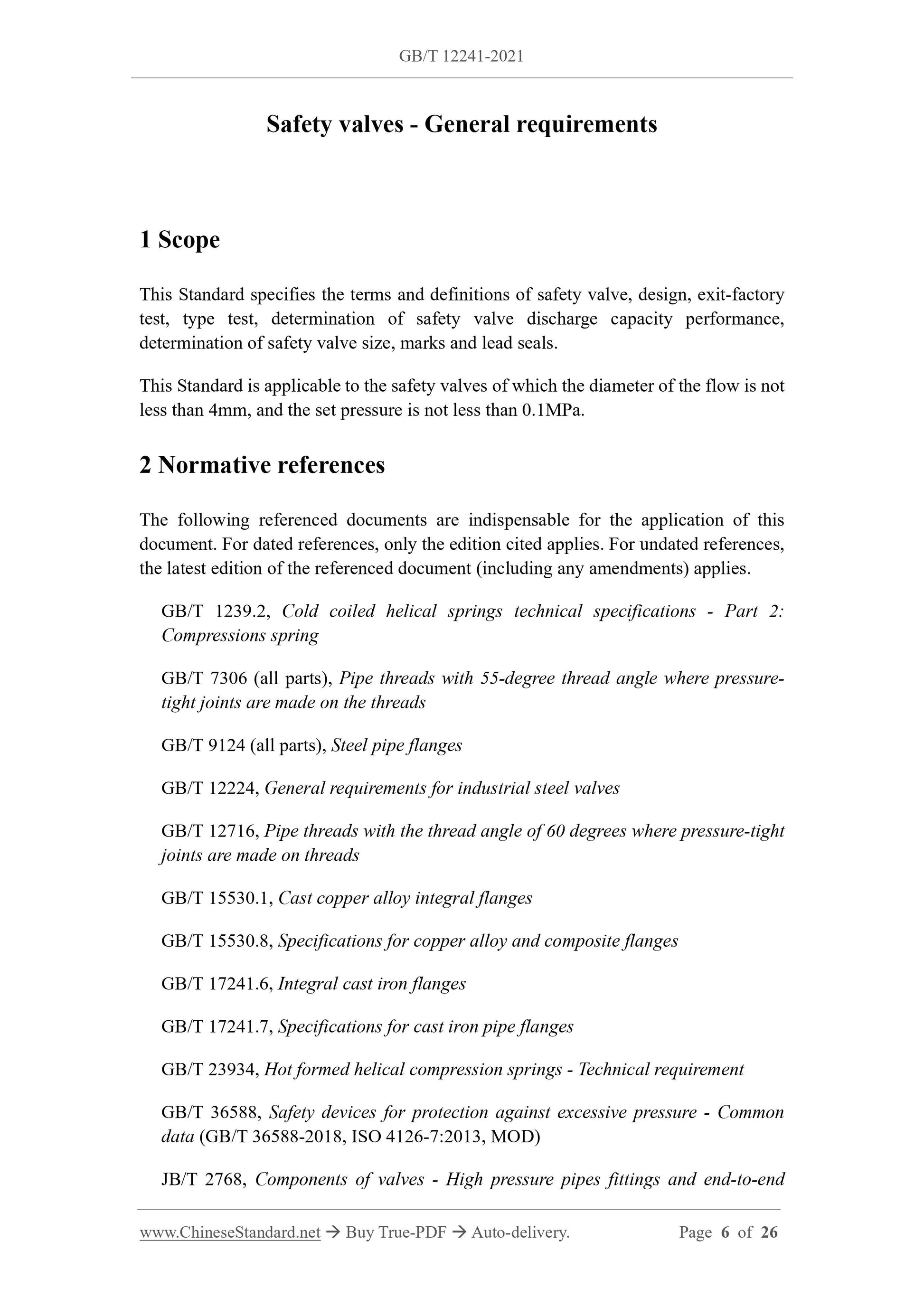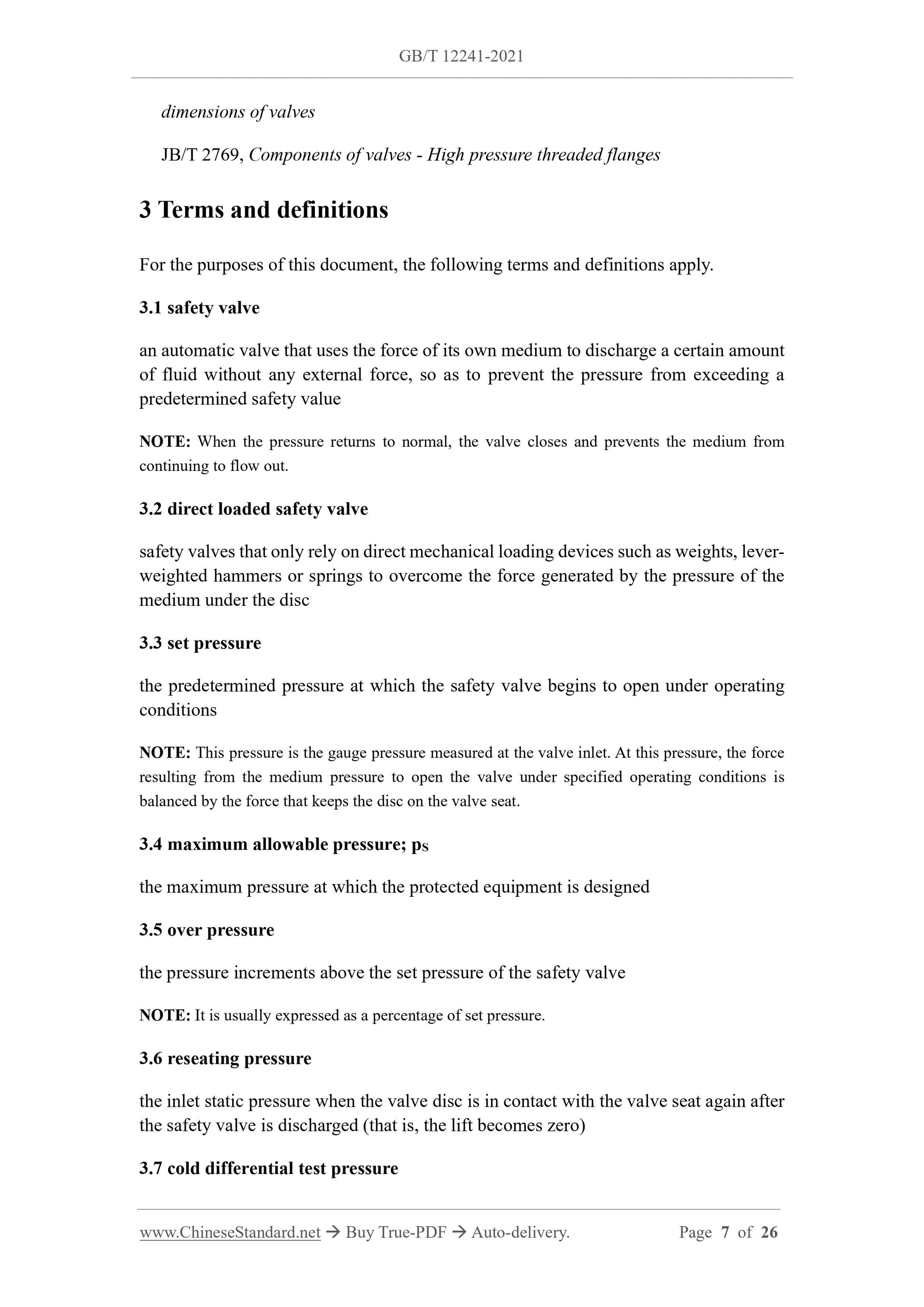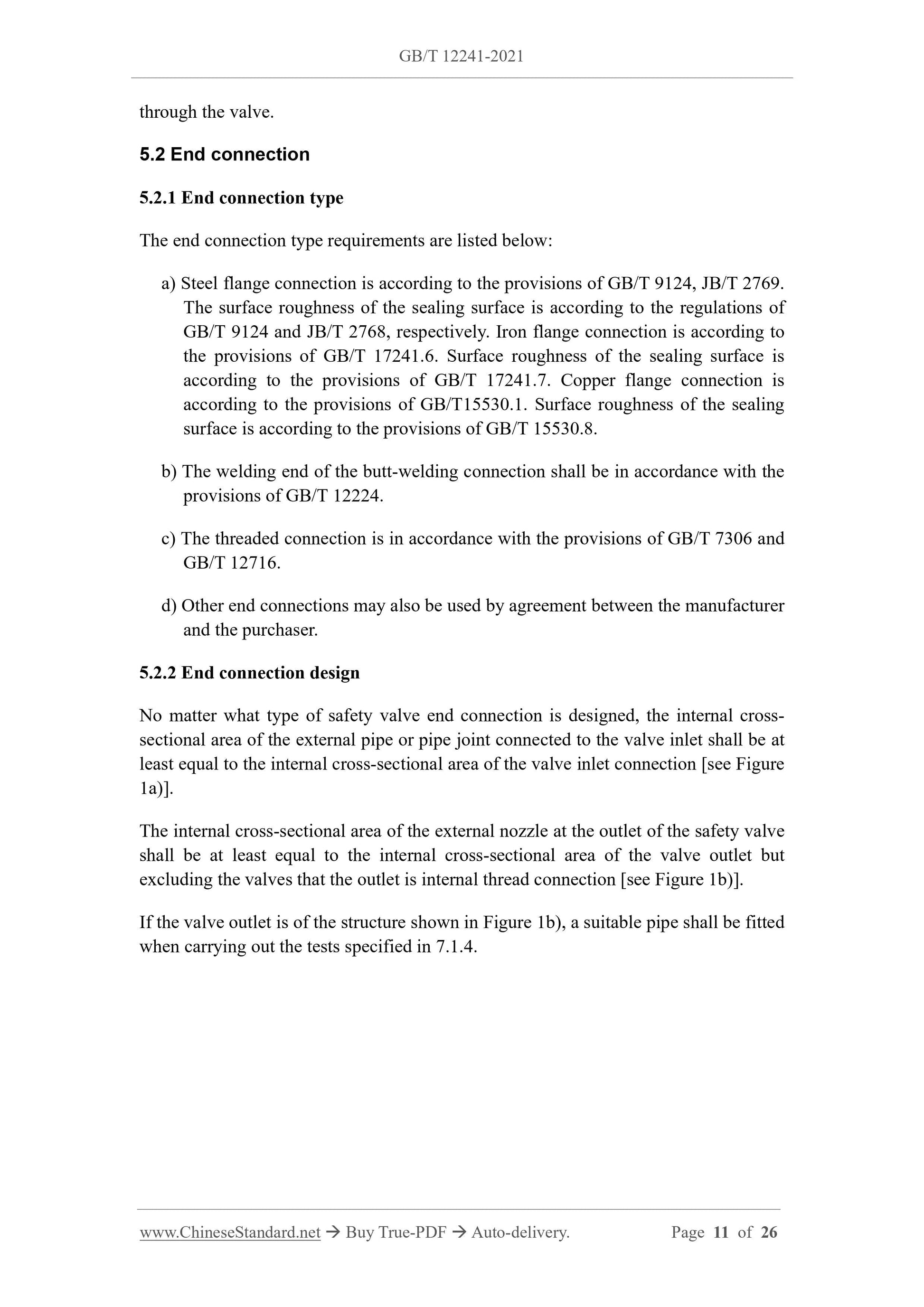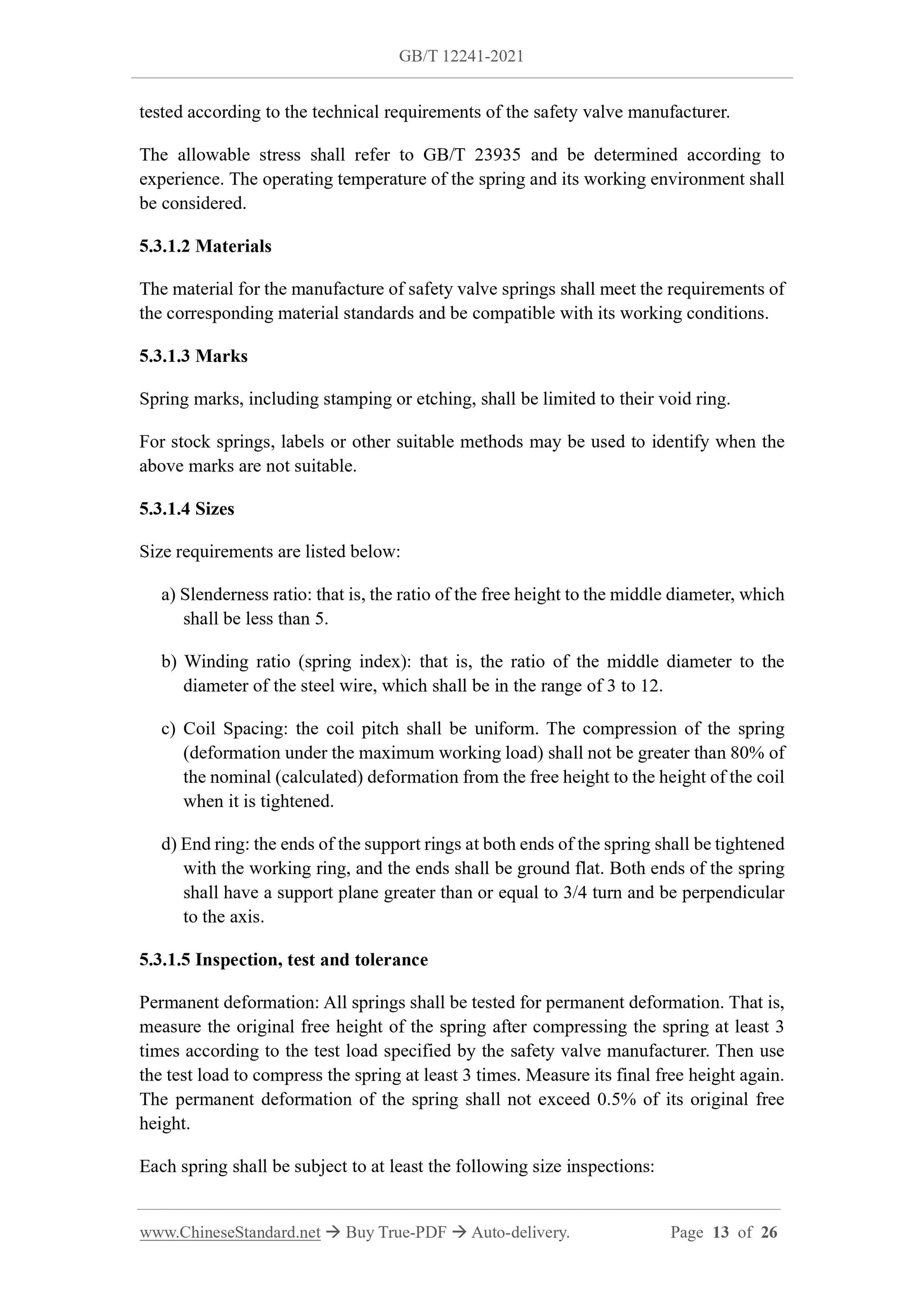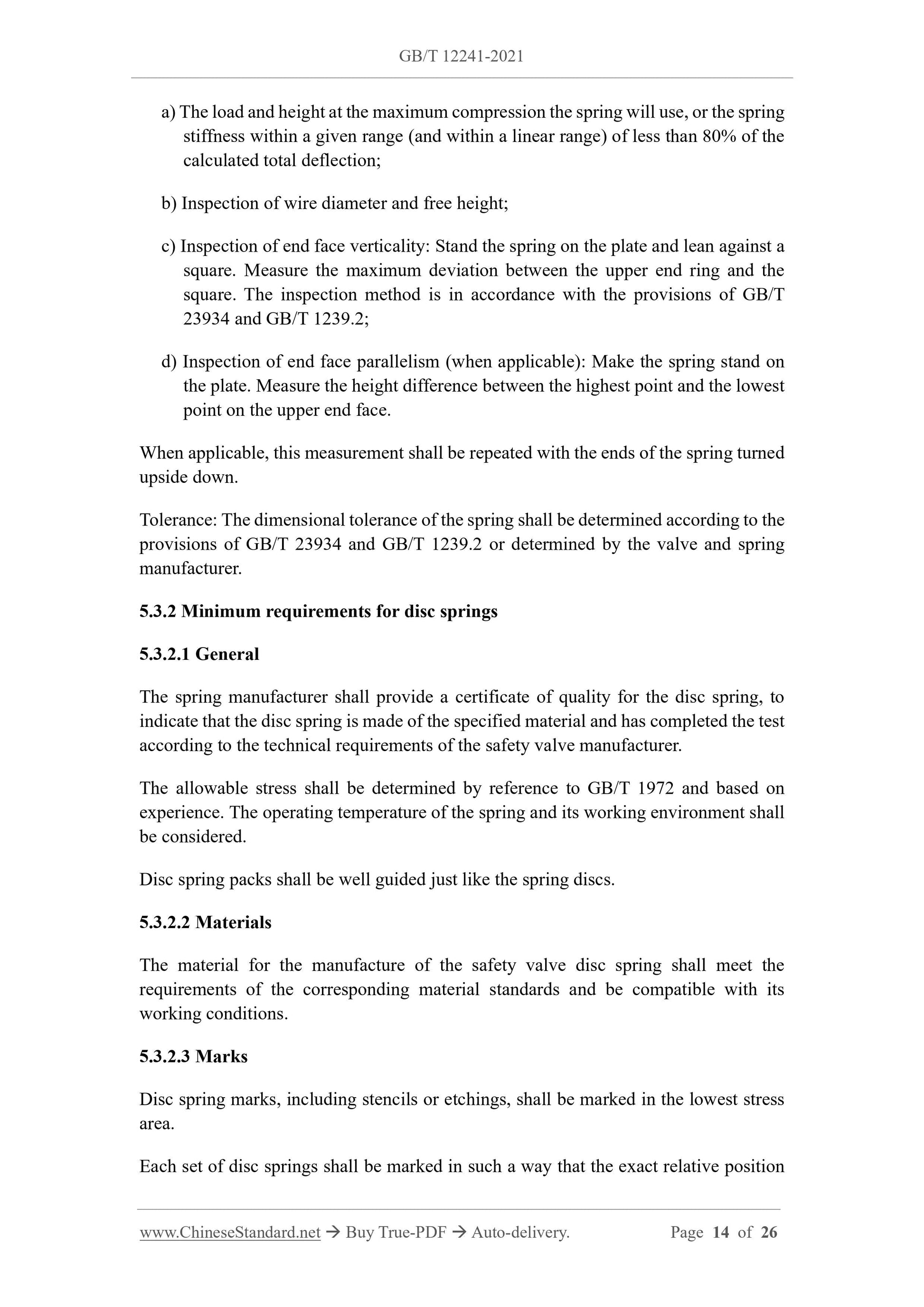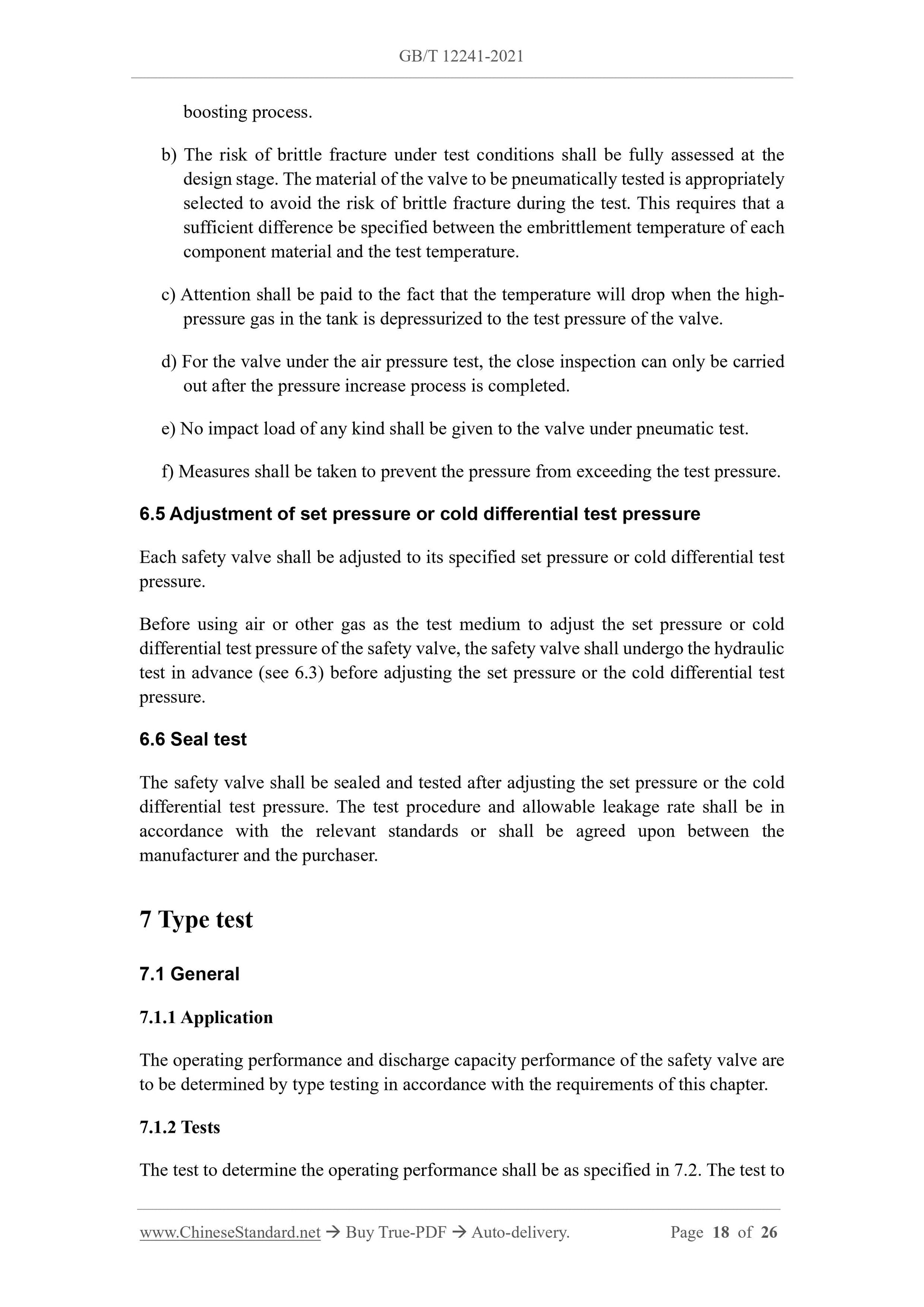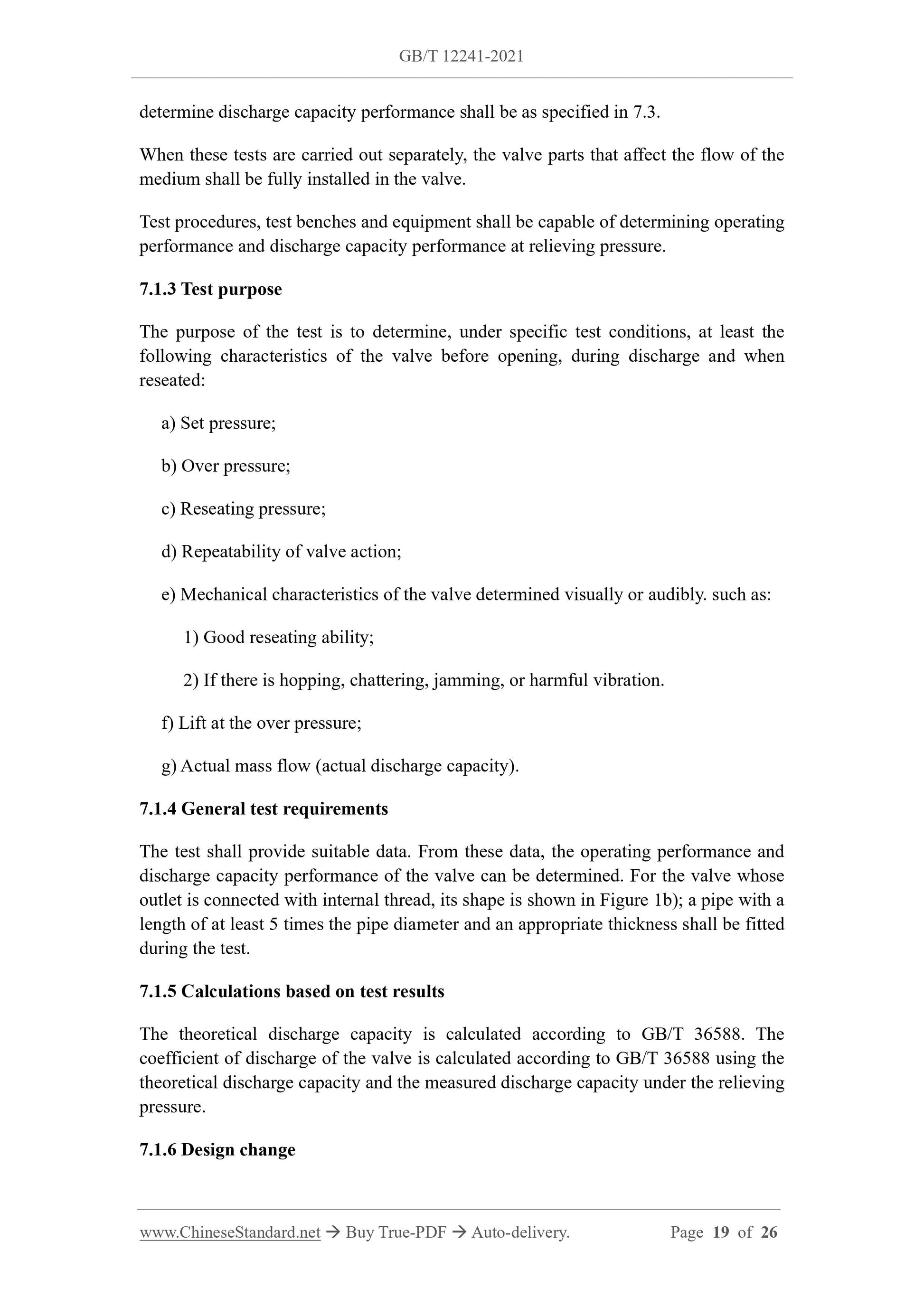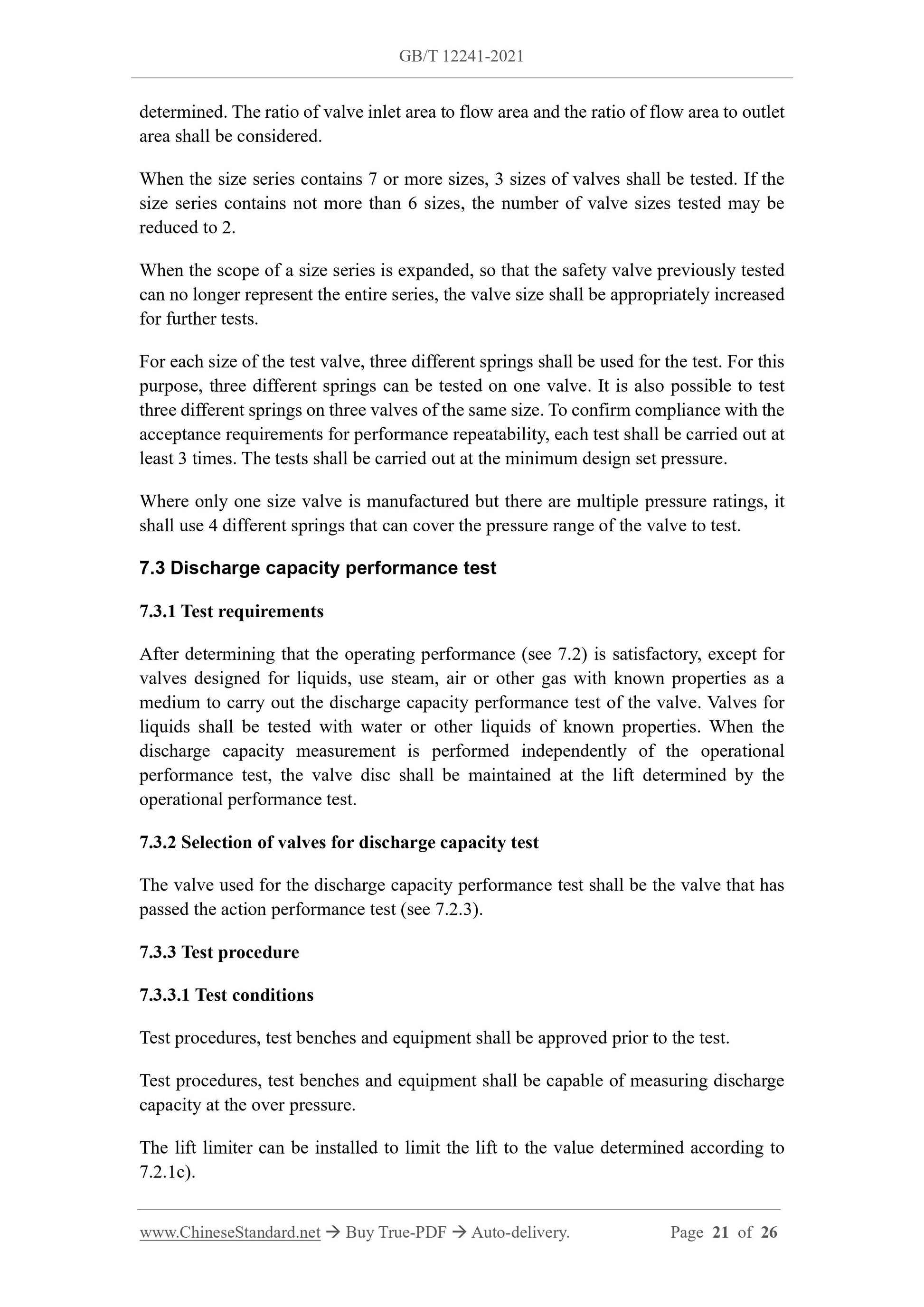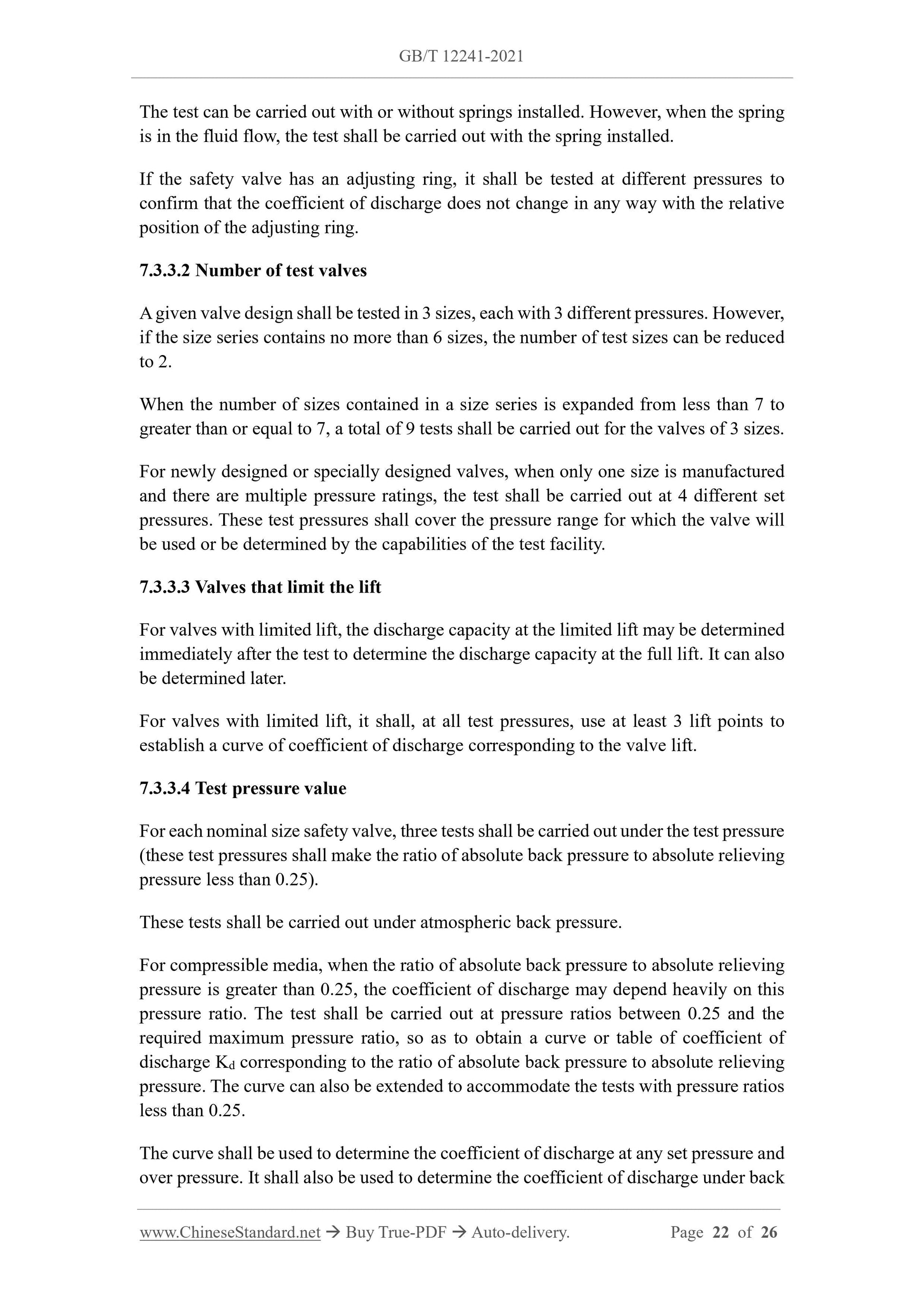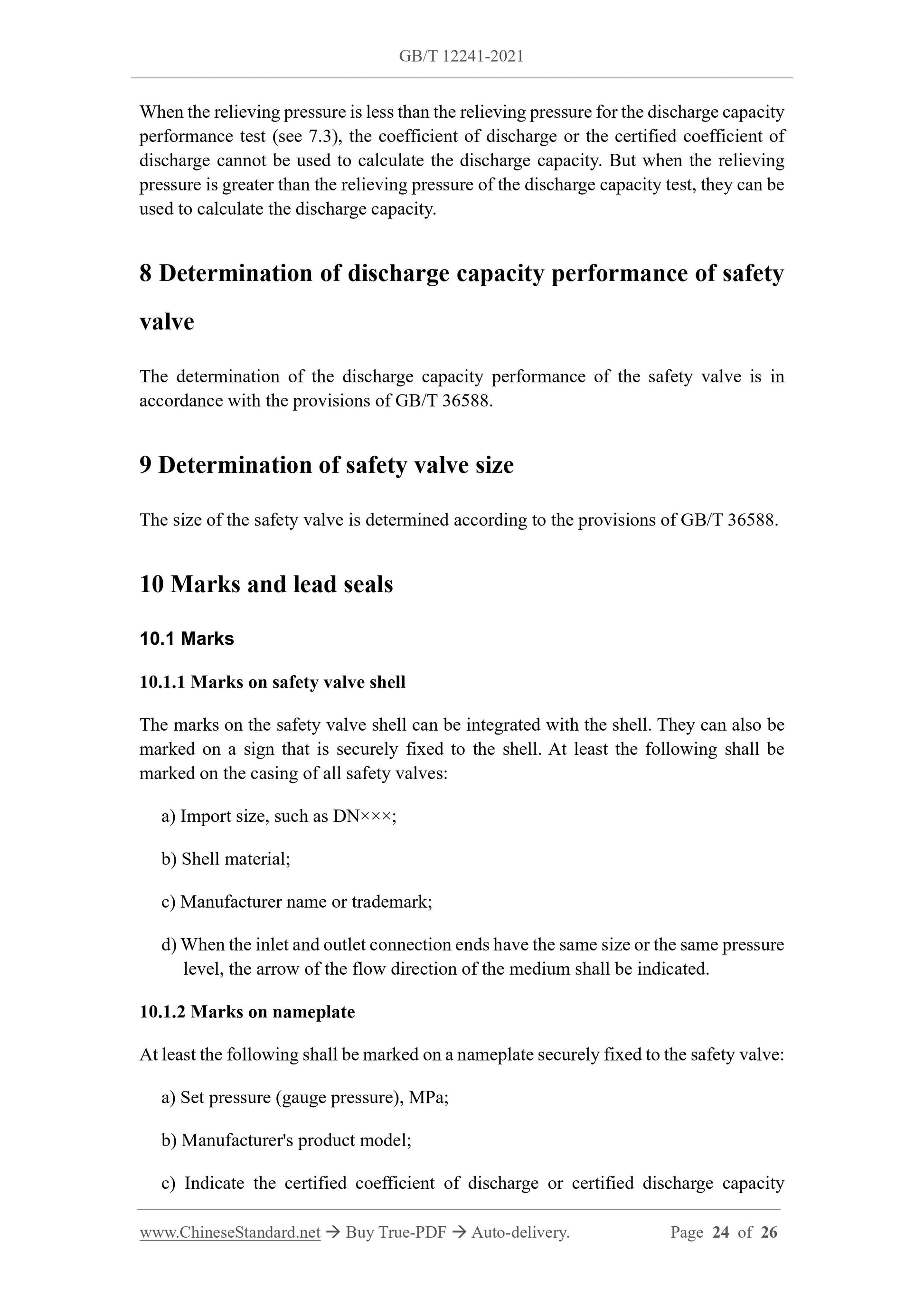1
/
of
12
www.ChineseStandard.us -- Field Test Asia Pte. Ltd.
GB/T 12241-2021 English PDF (GB/T12241-2021)
GB/T 12241-2021 English PDF (GB/T12241-2021)
Regular price
$245.00
Regular price
Sale price
$245.00
Unit price
/
per
Shipping calculated at checkout.
Couldn't load pickup availability
GB/T 12241-2021: Safety valves - General requirements
Delivery: 9 seconds. Download (and Email) true-PDF + Invoice.Get Quotation: Click GB/T 12241-2021 (Self-service in 1-minute)
Newer / historical versions: GB/T 12241-2021
Preview True-PDF
Scope
This Standard specifies the terms and definitions of safety valve, design, exit-factorytest, type test, determination of safety valve discharge capacity performance,
determination of safety valve size, marks and lead seals.
Basic Data
| Standard ID | GB/T 12241-2021 (GB/T12241-2021) |
| Description (Translated English) | Safety valves - General requirements |
| Sector / Industry | National Standard (Recommended) |
| Classification of Chinese Standard | J16 |
| Word Count Estimation | 18,159 |
| Issuing agency(ies) | State Administration for Market Regulation, China National Standardization Administration |
Share
